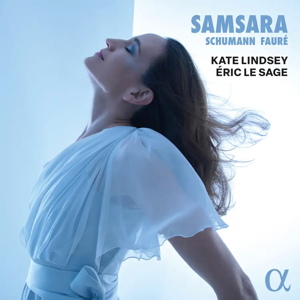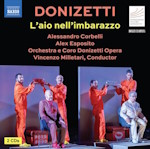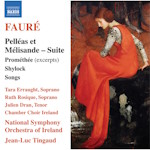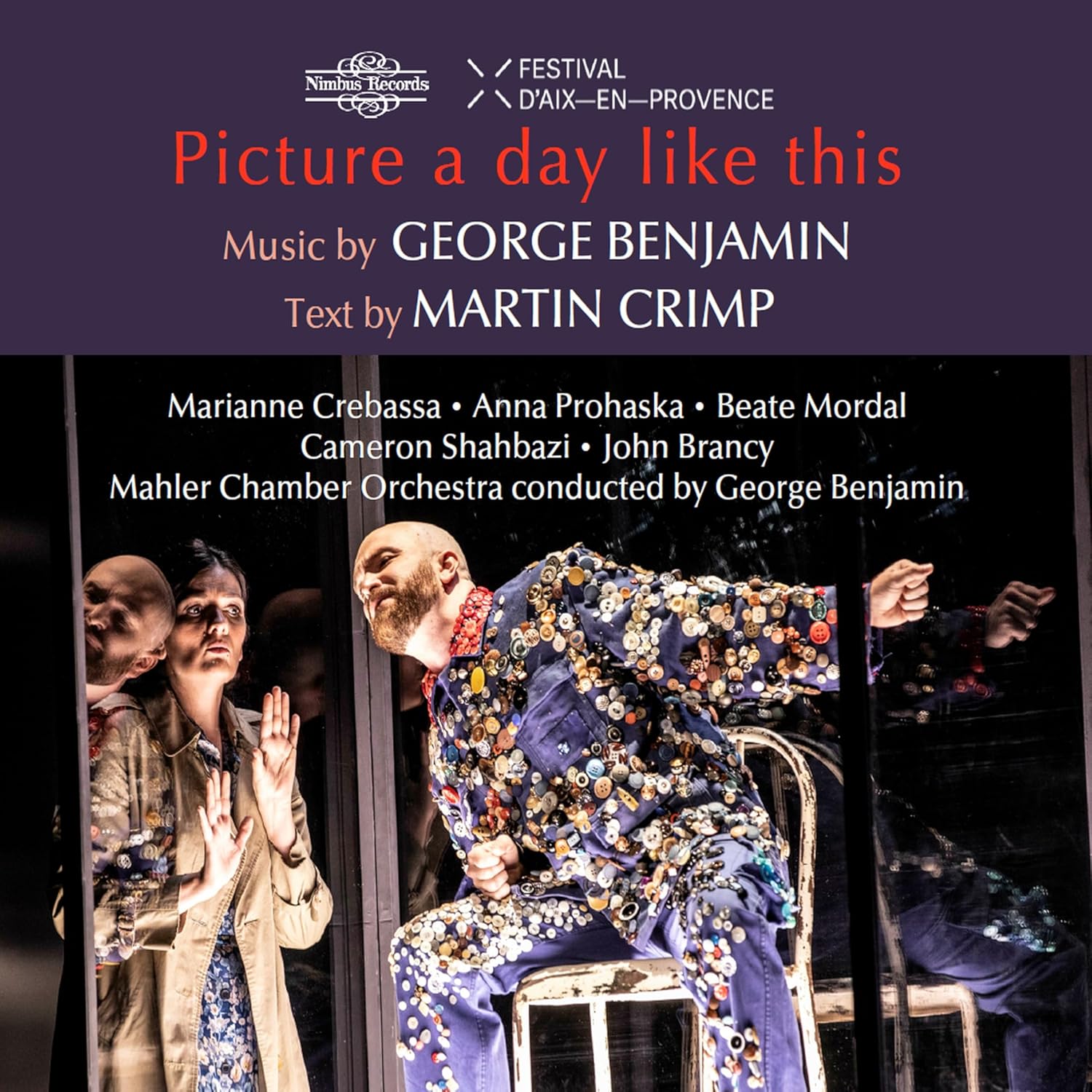
Samsara – Schumann & Fauré
Kate Lindsey (mezzo-soprano), Éric Le Sage (piano)
rec. 2024, Grand Manège Concert Hall, Namur, Belgium
Alpha Classics 1125 [57]
“Samsara” is Sanskrit, denoting the endless cycle of birth, death and rebirth which is a feature of the Hindu and Buddhist religions. The allocation of that term as the title of this new recital album was prompted by mezzo-soprano Kate Lindsey’s reflections upon the circle of life, knowing that while she was recording the medley of songs here, her own father’s life was coming to an end – and it is to him that she dedicated it.
While Nicolas Derny’s notes are titled “Songs of Woman”, it must be observed that the programme here centres upon two song cycles written by two male composers setting the words of two male poets attempting to write from a female viewpoint; for a brief discussion regarding to what degree their 19C attitudes sit easily with modern sensibilities, I refer you to the introduction of my survey. What is not in doubt is the quality of the music and its performance here; Kate Lindsey evidently feels sufficiently comfortable with the content of these songs to make them the centre of a very personal tribute and artistic statement. The two cycles are book-ended by five of the composers’ most celebrated songs: three from Schumann’s Myrthen, and Fauré’s Clair de lune and Chanson d’amour, making just under an hour of music. Welcome additions to the trilingual notes are the texts and translations, essential to a proper appreciation of it.
I love Kate Lindsey’s voice; it is rounded, fluty, slightly husky, with a fast, flickering vibrato that never degenerates into a tremolo – unlike another eminent American mezzo-soprano I could name. Her smoky lower register lends sensuousness to her utterance and having demonstrated delicacy and restraint in her delivery of the opening song, Der Nussbaum, she then show that she also has reserves of power on the top E flats in “Set ich ihn gesehen” opening the Schumann song cycle – then sings the same note pianissimo. In this regard, she reminds me of another favourite among currently active mezzo-sopranos: Karen Cargill, and is reminiscent of another predecessor: Frederica von Stade. My only mild reservation is that Lindsey occasionally half-aspirates runs a tad breathily – but in truth that adds a certain rapt quality, suggestive of the woman’s bewildered delight. Central to the cycle, both numerically and emotionally, is Du Ring an meinem Finger which is here performed “straight” without making a meal of its surging melody but instead builds cannily to the climactic “Ihm angehören ganz” (Belong wholly to him) in the penultimate stanza before the quiet reprise of the opening verses. Pianist and Lieder specialist Éric Le Sage matches the singer for nuance and subtlety in his phrasing. The opening and closing phrases of Süsser Freund are both floated dreamily mezza voce and Le Sage lets the surrounding chords resonate to create an aureate halo of sound – beautiful. There is no danger of these songs lapsing into sentimentality when they are sung with such good taste and restraint. The bleak anguish of the concluding song is perfectly depicted, the voice drained of vibrancy, the coda recalling the opening song, a shadowy reminder of lost bliss.
As ever with modern singers, the German diction is impeccable. The sound is quite reverberant, more suggestive of a concert hall than a drawing room. I confidently add this account to my top recommendations in the survey linked above.
We pivot from strophic Teutonic order to the shifting Gallic diaphanousness of Fauré’s much more rarely performed song cycle. Again, Lindsey first makes sparing use of vibrato until she narrates the creation of Eve, then opens up her voice. Much of the music is “wispy” and impressionistic in the fashion of French music of the early 20C which enchants some and repels others; the shifting harmonies in the piano accompaniment are strangely other-worldly which, given the subject matter, is surely apt. There is no mention of Adam or the specifics of the Temptation and Fall in this very free treatment of one aspect of the Creation; it depicts Eve exulting in the beauty and fecundity of Paradise; only in the eighth of the ten songs does a shadow intrude, heralded by tritone dissonances on the piano. The ninth song, Crépuscule (Twilight) further darkens the mood with premonitions of the advent of Death, which is depicted in the final song as less of a punishment and more of a painless dissolution, as Eve’s soul ascends like the vapour from a snuffed-out candle. Its peculiar melodic diffuseness and the rather obscure préciosité of Belgian Symbolist Charles van Leberghe’s verse perhaps explain the comparative neglect of Fauré’s song cycle compared with Schumann’s but there is no doubting the expertise and sensitivity of its two performers here. I suspect, however, that it will always remain “caviar to the general”…
In consequence, there is a certain sense of homecoming as the recital concludes with two of each composer’s most popular melodies. They are sung with easy grace and in perfect taste.
This is an absorbing and enterprising piece of programming, showcasing both the familiar and the less so, impeccably performed by a stellar partnership of singer and pianist.
Ralph Moore
Buying this recording via a link below generates revenue for MWI, which helps the site remain free.



Contents
Robert Schumann (1810-1856)
Frauenliebe und Leben, Op. 423
Songs from Myrthen Op. 25:
Der Nussbaum
Die Lotosblume
Du bist wie eine Blume
Gabriel Fauré (1845-1924)
La Chanson d’Ève, Op. 95
Clair de lune
Chanson d’amour

















